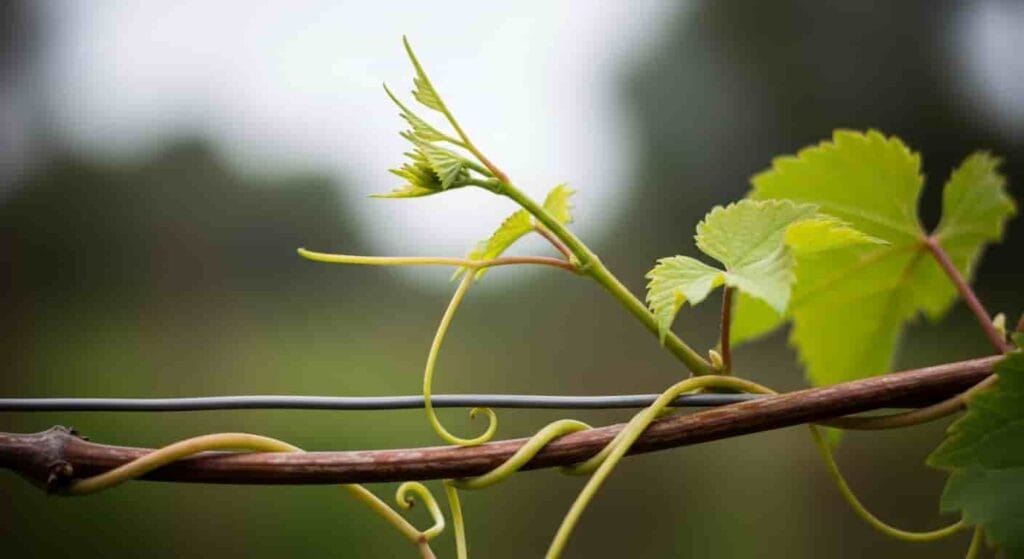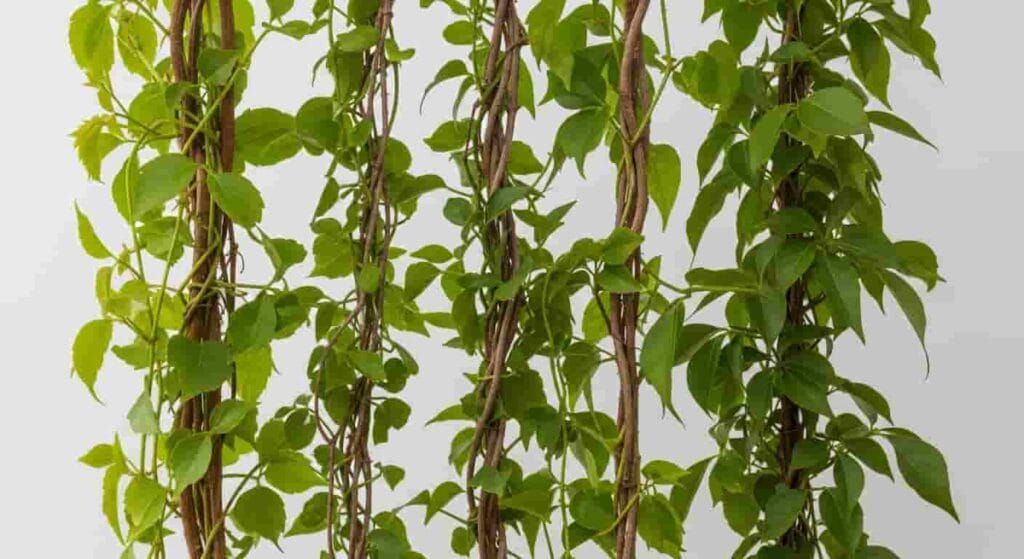Did you know that vine plants have a fascinating secret behind their upward growth? As they climb towards the sunlight, these resilient plants not only showcase nature’s ingenuity but also play a crucial role in maintaining ecosystems. In this article, we’ll explore five compelling reasons why vines grow upwards, shedding light on their survival strategies and the benefits they bring to both gardens and wild landscapes. By the end, you’ll gain a deeper appreciation for these remarkable plants and perhaps even some inspiration for your own gardening endeavors.
The Wonders of Vine Plants
Vine plants possess an extraordinary ability to grow upwards, leveraging their surroundings to thrive in a competitive environment. This upward growth is not just a survival tactic; it’s a remarkable adaptation that allows them to access sunlight more efficiently. By climbing towards the light, these plants maximize photosynthesis, which is essential for their growth and reproduction. It’s fascinating to consider how this natural strategy enables vines to flourish even in dense forests where sunlight is limited.
Moreover, vine plants showcase a variety of climbing mechanisms — some use tendrils, while others wrap around supports or cling with adhesive pads. This diversity in climbing techniques illustrates the ingenuity of nature. For gardeners and plant enthusiasts, understanding these growth habits can inspire creative indoor gardening solutions. Imagine decorating your space with cascading vines that not only beautify your home but also purify the air! By incorporating vertical gardening techniques, you can create a lush, green oasis that thrives on the principles of these incredible plants.

Natural Instincts: Survival and Growth Patterns
Vine plants exhibit remarkable survival strategies, primarily through their upward growth patterns. This tendency is not merely aesthetic; it’s a survival mechanism. By climbing towards sunlight, these plants maximize photosynthesis, which is crucial for their energy production. The competition for light in densely populated environments drives vines to ascend, allowing them to thrive where other plants might struggle.
Moreover, the unique structural adaptations of vine plants — such as tendrils and clinging roots — enable them to anchor themselves securely while reaching new heights. These adaptations ensure that they can exploit vertical spaces, often taking advantage of trees and other structures. As they grow upward, they also gain access to a broader range of nutrients found in different soil layers, promoting both resilience and growth. This dynamic relationship with their environment illustrates how natural instincts drive not just survival but also the continuous evolution of these fascinating organisms.
Seeking Sunlight: The Need for Light
Vine plants, with their remarkable ability to grow upward, are on a relentless quest for sunlight. This behavior is not merely instinctual; it’s a survival strategy deeply rooted in their biology. By climbing toward the sun, these plants maximize their exposure to light, essential for photosynthesis — the process that fuels their growth and sustains their life. Without adequate sunlight, vine plants can become stunted and weak, unable to produce the energy they need.
This upward growth is a fascinating dance of adaptation. In dense forests, where sunlight struggles to penetrate the canopy, vine plants utilize their climbing skills to navigate through the shadows. They wrap around trees or structures, positioning themselves to capture every precious ray of light. This not only enhances their own survival but also creates a unique ecosystem, as they provide shelter and food for various organisms. So, next time you see a vine scaling a trellis or wall, remember: it’s not just reaching for the sky; it’s forging its path to thrive in a competitive world!

Climbing for Support: Utilizing Structures
Vine plants exhibit a remarkable strategy when it comes to growth, leveraging structures in their environment to ascend toward sunlight. This behavior, known as “thigmotropism,” allows them to wrap around supports such as trees, fences, and trellises, significantly enhancing their access to light and nutrients. By seeking out vertical spaces, these plants can outcompete others for sunlight, which is essential for photosynthesis and overall vitality.
But the benefits of climbing go beyond just light acquisition. As vines climb, they contribute to the ecosystem by providing habitats for various organisms and promoting biodiversity. For instance, a well-placed trellis not only supports your climbing plants but also creates a microhabitat for insects and birds, enriching your garden’s ecosystem. Additionally, utilizing structures creatively can transform your outdoor space into a vertical garden, maximizing limited areas while adding aesthetic appeal. So, whether you’re a seasoned gardener or just starting out, consider how you can encourage your vine plants to reach new heights by strategically integrating support systems into your landscape!
Reaching New Heights: Competition for Space
In the intricate dance of nature, vine plants epitomize the fierce competition for sunlight, a resource vital for survival. By growing upwards, these plants engage in a strategic race, utilizing their climbing abilities to reach higher ground where light is abundant. This vertical ascent not only enhances their access to photosynthesis but also elevates them above competing flora that struggle for the same limited light source. As they spiral around trees, fences, or trellises, they exhibit remarkable adaptability, showcasing nature’s ingenuity in overcoming obstacles.
Adaptation and Innovation
The upward growth of vines is not merely about reaching for the sky; it represents a sophisticated survival strategy. Many species have developed specialized structures like tendrils and adhesive pads that allow them to cling to surfaces securely. This adaptability enables them to thrive in diverse environments, from dense forests to urban gardens. Moreover, as they climb, they create a micro-ecosystem that supports various organisms, enhancing biodiversity. In this way, the act of growing upwards becomes a communal effort — one that fosters life and beauty while embodying the relentless pursuit of survival in the natural world.

Wind Resistance: Stability in Nature
Vine plants exhibit a remarkable ability to withstand wind resistance, showcasing nature’s ingenuity in promoting stability. By climbing and anchoring themselves to nearby structures or other plants, these vines reduce the amount of surface area exposed to harsh winds. This strategy not only minimizes the risk of damage but also allows them to thrive in diverse environments, from dense forests to urban landscapes.
Moreover, many vine species have evolved unique adaptations to enhance their resilience against strong gusts. For instance, the twining habit of some vines allows them to wrap around supports, creating a stronger structural integrity that can better endure wind forces. This natural engineering marvel demonstrates how these plants have learned to harness their surroundings for survival, turning potential threats into opportunities for growth. So next time you see a vine gracefully climbing upward, remember: it’s not just seeking sunlight; it’s mastering the art of stability in the face of nature’s challenges!
Adaptation Strategies: Evolving Over Time
Vine plants exhibit remarkable adaptation strategies that enable them to thrive in diverse environments. By growing upward, they seek sunlight and avoid competition with other vegetation, showcasing an evolutionary advantage. This vertical growth is not just a physical trait; it represents a sophisticated survival strategy developed over millennia. For instance, some vines have evolved specialized tendrils or adhesive pads that allow them to cling to surfaces, ensuring they can reach greater heights with minimal energy expenditure.
Furthermore, vines are incredibly versatile in their growth patterns. They can alter their climbing methods based on their surroundings — whether it’s wrapping around a sturdy tree trunk or climbing up a trellis in a garden. This adaptability ensures that they maximize their access to light and nutrients, which is crucial for their survival and reproduction. As you explore the fascinating world of vines, consider how these adaptive strategies not only enhance their growth but also contribute to the biodiversity of their ecosystems, creating lush environments that support countless other species.
The Beauty of Vertical Growth
Vine plants, with their elegant upward trajectory, bring a unique charm to any space. By climbing towards the light, they not only maximize their access to sunlight but also create a lush, green tapestry that can transform a mundane wall into a vibrant focal point. This vertical growth pattern invites the eye upward, enhancing the perception of space and creating an illusion of height in smaller rooms. Imagine a cozy corner adorned with cascading tendrils — it’s like nature’s artwork framing your living space!
Moreover, the beauty of vertical growth isn’t just about aesthetics; it’s also a celebration of resilience and adaptability. As these plants navigate obstacles, they demonstrate an innate ability to thrive despite challenges. This tenacity can inspire us to embrace our own growth journeys. Just as vines find their way, we too can learn to reach for our aspirations, scaling new heights in our personal and professional lives. So, whether you’re considering adding greenery to your home or simply looking for motivation, let the upward journey of vine plants remind you of the beauty in striving for more.






